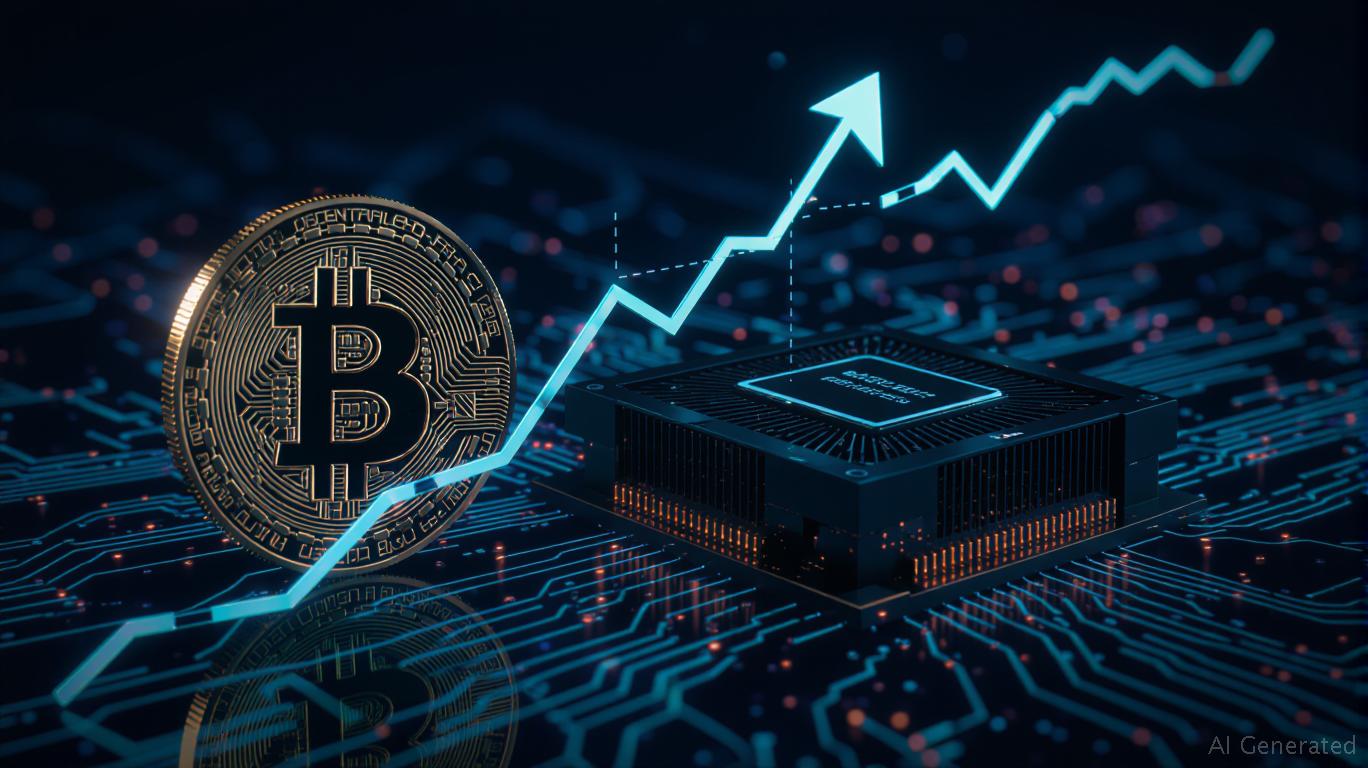Bitcoin and NVIDIA: Riding the Bull with Volatility as Your Ally
The crypto market's recent surge to new highs and NVIDIA's $4 trillion valuation milestone have created a compelling case for investors to embrace volatility as a tool for profit. As
(BTC) breaks above $112,000 and (NVDA) dominates the AI chip race, the interplay of short squeezes, tariff-driven demand, and institutional capital is reshaping the investment landscape. This article explores how strategic long positions in these outperforming assets can capitalize on market dynamics—and why now is the time to act.
Bitcoin's Surge: Short Squeezes and the Path to $150,000
Bitcoin's recent breakout to $112,000+ was not just a price milestone but a reflection of structural shifts in market dynamics. The key catalyst was a short squeeze triggered by liquidations exceeding $200 million near key resistance levels. This purge of over-leveraged short sellers, as noted by Bitfinex analysts, created a healthier market foundation.
The rally is being fueled by two critical factors:
1. Institutional On-Chain Accumulation: Exchange reserves have dropped from 3.11 million BTC to 2.99 million BTC since March 2025, signaling long-term holders (LTHs) are buying the dip.
2. Geopolitical Tailwinds: U.S. tariff hikes and global inflation have solidified Bitcoin's role as a “disruption-proof” store of value. Sygnum Bank's Katalin Tischhauser observes that Bitcoin is decoupling from traditional markets, with its correlation to equities falling to 0.36 in Q2 2025—a sign of maturation.
Technical analysts at CrediBull Crypto highlight a W-X-Y wave structure, suggesting Bitcoin could breach $114,000 to hit $120,000–$154,000 by year-end. The path is not without volatility: a drop below $108,500 could trigger $1.994 billion in long liquidations, but the rising dominance of LTHs (up 1.02%) suggests retail capitulation is a buying opportunity.
NVIDIA's Tech Leadership: AI Chips and the Tariff Gambit
NVIDIA's valuation surge—$4 trillion as of July 2025—stems from its AI chip monopoly. Its Blackwell architecture, priced at $6,500–$8,000, powers 90% of global AI data centers. Despite $5.5 billion in revenue losses due to U.S. tariffs, NVIDIA is pivoting to markets like Saudi Arabia and Taiwan, where sovereign AI factories are driving 73% YoY growth in data center revenue to $39.1 billion.
Tariffs, paradoxically, have become a catalyst for innovation:
- NVIDIA's Blackwell GPU—compliant with export restrictions—has unlocked $15 billion in untapped Chinese demand.
- The GB300 chip (50% better FP4 performance) positions NVIDIA to dominate enterprise AI infrastructure for years.
The risks? Supply chain bottlenecks and hyperscaler spending fatigue. Yet NVIDIA's 70%+ gross margins and $30 billion cash hoard provide a buffer. Analysts at
see a $250 stock target, implying 30% upside, driven by AI's $1 trillion market by 2030.The Tariff Nexus: How Policy Shapes Both Markets
U.S. tariffs are a double-edged sword for Bitcoin and NVIDIA:
- NVIDIA's Pain Point: 50% tariffs on Chinese imports have reduced its market share there from 95% to 50%. The H20 chip write-down ($4.5 billion) underscores the costs of geopolitical tension.
- Bitcoin's Gain: Mining hardware costs rise as semiconductor firms prioritize AI chips. Yet this supply shock could tighten Bitcoin's network, boosting its scarcity premium.
A 90-day tariff truce ending in August 2025 could unlock $15 billion in NVIDIA sales while calming crypto markets. Investors should watch for tariff resolution as a binary event—a green light for both assets.
Institutional Adoption: The New Game Rules
Institutional investors are no longer bystanders. Bitcoin's $3.47 trillion market cap and NVIDIA's $4 trillion valuation reflect a shift toward real capital flows:
- Bitcoin ETFs: $320 million inflows in Q2 2025, with Polymarket assigning a 76% probability of $115,000 by July's end.
- NVIDIA ETFs: Tech-focused funds allocated $1.2 billion to
The correlation between Bitcoin and NVIDIA has weakened (0.36 in Q2) but remains a sentiment barometer. A drop in NVDA's stock below $155 could spook Bitcoin holders, but a sustained $160+ price would signal bullish momentum.
Strategic Allocation: Long Bitcoin, Long Tech
Investors should consider three tactics to outperform:
- Dollar-Cost Average into Bitcoin:
- Use the $108,500–$114,000 range as a buy zone.
Target: $150,000 by early 2026, with stops below $95,000.
Leverage NVIDIA's AI Monopoly:
- Buy dips below $155, aiming for $200+ by year-end.
Avoid overexposure to short-term volatility; focus on Blackwell ramp-up metrics.
Correlation Hedging:
- Pair Bitcoin with NVIDIA ETFs (e.g., XRT) to balance crypto and tech exposure.
- Avoid: Overweighting retail crypto plays; whales now dominate 90% of Bitcoin's movement.
Conclusion: Volatility as an Ally, Not an Enemy
Bitcoin and NVIDIA are twin pillars of the new economy—one a decentralized disruptor, the other a centralized innovator. Their rise is underpinned by real-world adoption, geopolitical tailwinds, and the purge of speculative short sellers.
Investors who allocate to these assets now—while volatility creates entry points—position themselves to profit from $150,000 Bitcoin and $2 trillion NVIDIA. The path is clear: buy the dips, ignore the noise, and let volatility work for you.
Final Note: Monitor the August tariff deadline and Bitcoin's next resistance at $114,000. A breakthrough there could trigger a self-fulfilling rally—the hallmark of a true bull cycle.
Sign up for free to continue reading
By continuing, I agree to the
Market Data Terms of Service and Privacy Statement

Comments
No comments yet